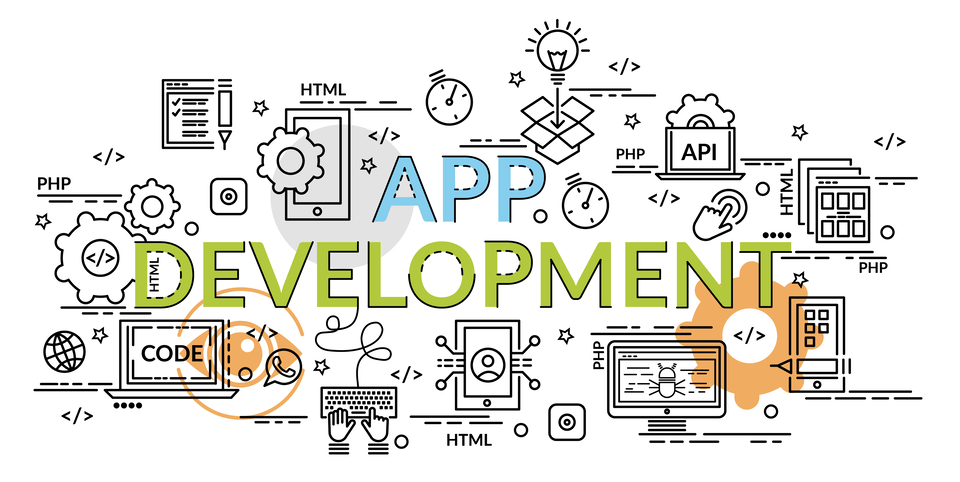PaaS offers a fully managed solution for developers seeking to launch functions shortly. When builders choose to make use of PaaS, they’ll concentrate on their development work and let the provider handle backend services and system administration. A platform as a service, or PaaS, is certainly one of the three major cloud computing service models. In our opinion, it’s the only one that successfully delivers all benefits of the cloud to software builders, including management, cost-effectiveness, flexibility, and scalability. Developing and testing apps in a hosted environment could additionally be the most common use for PaaS, but it’s certainly not the only one.

Automated security patches and upgrades are made possible by PaaS cloud services. This ensures that there are no safety flaws and that the application is running on the newest model and patch. By launching pre-configured environments, users can concentrate on improvement, prototyping, and developing new merchandise without having to worry about computing resources. One of the primary benefits of cloud computing is the ability to scale assets on demand.
This clears the means in which for further development and innovation with much less distraction, while additionally decreasing the amount of infrastructural setup and coding. PaaS also permits for scalability and simple migration because it exists in a cloud. Developers who don’t have to customise their underlying infrastructure and desire a fast, easily managed, and readily scalable method to develop their utility often select PaaS.
Reduced Prices
In many cases, the shopper can determine the place the application is hosted and is given a selection over how performant or safe that surroundings is, often at a further value. PaaS accomplishes all that, but with few exceptions, it has turn into a service obtainable on IaaS (infrastructure as a service) clouds somewhat than a separate cloud providing and infrequently consists of Kubernetes container orchestration. Serverless computing, a sort of cloud platform that makes improvement of certain types of purposes even easier, is taken into account an evolution of PaaS. IaaS provides a basic knowledge center for storage and dynamic scaling capabilities.

Typically clients pays a set charge to supply a specified quantity of assets for a specified number of users, or they can choose ‘pay-as-you-go’ pricing to pay only for the assets they use. The increased pace of development and deployment is among the many top enterprise benefits of PaaS in cloud computing. Since developers have access to quite a few automated instruments and technological innovations, they will significantly pace up the creation of apps. Hence, the app improvement lifecycle is decreased, compared to the standard one, and extra new merchandise can enter the market faster. With Red Hat OpenShift, you can automate life-cycle administration for increased security, tailored operational solutions, and app portability. You can even standardize developer workflows, streamline delivery, assist a number of environments, and allow steady integration alongside automated release administration.
Advantages Of A Paas: From Cost-efficiency To Scalability
The risks of PaaS can be minimized by absolutely assessing the prices of using PaaS instruments for application improvement and deployment. Enterprises can generally reduce costs through careful function selection, and all cloud suppliers offer instruments to estimate costs. If an enterprise has good information on software usage, it can keep away from price surprises that would incur the wrath of senior management. Developers could choose a PaaS choice to focus more on the coding and improvement of their applications whereas saving money and time managing infrastructure. PaaS platforms usually supply a selection of API integrations, and there are a quantity of marketplaces available, making it simple to incorporate other applied sciences into an application. This mannequin of cloud computing is, perhaps, essentially the most advantageous for inventive builders and firms that need customized options.
Developers can effectively create custom-made and revolutionary functions utilizing their favourite framework or language, unburdened by infrastructure maintenance. Platform.sh, for example, is a multi-cloud choice that uses open-source software program to permit groups to migrate and function workloads to totally different distributors without needing to undergo refactoring. Delivering feature-rich, ready-made purposes paas vs saas vs iaas examples for every little thing from e-mail, workplace, and video conferencing to tax and project administration, the productivity, workflow, and time-to-value advantages of SaaS are plentiful. Like different as-a-service fashions, it’s a viable selection for companies looking to migrate away from the labor intensity of sustaining on-premise sources.

Red Hat Marketplace provides automated deployment of certified software program on any Red Hat OpenShift cluster. For cloud-native improvement use instances, a Kubernetes-based PaaS can operate because the platform on which container-based purposes can run, scale, and be managed. For instance, the cloud providers editions of Red Hat® OpenShift® are managed PaaS choices.
Using open-source cloud options makes it simpler to migrate computing operations from one provider to another. Optimal performance and consumer expertise in your web sites and functions are crucial. The observability tools supplied by a PaaS supplier should offer you actionable insights to enhance your code and provide comprehensive efficiency monitoring. They ought to give you a real-time view of your resource utilization and provide versatile scaling. First and foremost, look at the event instruments provided by the PaaS provider. As a rule, it ought to present an integrated toolchain of all the important tools you have to efficiently build an utility, together with a source code editor, debugger, and compiler.
Paas Model Definition
But increasingly, microservices customers agree that the results—including improved developer productivity, higher customer satisfaction and quicker time to market—are properly well price the effort. With IaaS, customers can choose the extent of management over their infrastructure, however they don’t have to manage or manage the bodily hardware. Developers can set up their infrastructure and resolve what layers of abstraction they need. To make sustaining their utility simpler, they’ll layer in things like load balancers or even managed providers like Managed Kubernetes. Eliminating the necessity to build and handle infrastructure allows you to leverage quicker deployment, sustainable scaling, and progressive, collaborative development. Instead of worrying about infrastructure, your builders can think about what matters most—creating incredible applications that meet your customers’needs.

PaaS instruments also enable businesses to research their knowledge, access business course of management (BPM) platforms, add communication features to applications and maintain databases. PaaS works well for small companies and startup corporations for two very basic reasons. First, it’s value effective, allowing smaller organizations access to state-of-the-art resources without the big price tag. Most small companies have never been capable of construct strong improvement environments on premises, so PaaS supplies a path for accelerating software growth.
Runs On Enterprise-grade Purposes
PaaS can take an organization to the following degree because it allows organizations to automate backend processes and provides the mandatory constructing blocks to answer demand. Read on to study precisely what PaaS is, the advantages it provides a corporation, the challenges it could present together with frequent examples and emerging tech.
In addition, you probably can choose any infrastructure and any cloud kind to run CloudBOX. Contact our specialists to learn more about CloudBOX and build cloud functions rapidly and easily. There is also a spread of smaller suppliers that supply high-quality providers as nicely. When selecting a PaaS provider, pay attention to differentiators corresponding to performance, structure and consumer experience.

In today’s article, we are going to concentrate on the platform as a service mannequin, telling you about PaaS advantages and disadvantages, in addition to advising you on when to choose this answer for your business. PaaS (platform-as-a-service) is a type of cloud computing that permits software builders to build, run, and manage software program applications simply, with out worrying about underlying infrastructure. PaaS is a cloud computing service that uses virtualization to offer an application-development platform to builders or organizations.
PaaS offerings create a layer of abstraction between developers and their cloud infrastructure, simplifying the experience and permitting for a zero-downtime scaling method. Many PaaS solutions additionally offer auto-scale functionalities that enable customers to specify the parameters or events that trigger the PaaS system to scale mechanically. A PaaS is a cloud computing model where a third-party host provides a enterprise with an entire improvement and deployment platform. It supplies everything necessary for the development and delivery of web applications, automating the entire pipeline. Private PaaS is extra work, and the acquired PaaS tools doubtless will not be free, so it’s essential to match the prices and benefits of personal PaaS with these of traditional public cloud PaaS.
The low-level work is completed by professionals and quite a few instruments can be found and prepared to operate, which saves time. Developers, in turn, are free to create their own software program and don’t depend upon providers in this regard. Service vendors don’t impose ready-made solutions, they solely construct a comfortable surroundings for efficient and fruitful work. PaaS (platform as a service)—not to be confused with SaaS (software as a service)—is a set of cloud providers used to build and manage fashionable functions and knowledge both on-premises or within the cloud.
A PaaS can help the entire improvement lifecycle, from building and testing to the continual maintenance and updating of applications. This may help purchasers keep away from the expense, inflexibility, and labor-intensiveness of putting in and sustaining resources. With PaaS, firms can construct their very own applications within the cloud, and then license the final product to their prospects as a SaaS resolution by way of Oracle’s Marketplace. This allows partners to deliver their innovation to the cloud ecosystem and run it inside a cloud environment. Companies are utilizing PaaS as they develop their very own SaaS, as they migrate to the cloud and while creating cross-platform applications that can be utilized on any device.
RDBMS provides Java functions with a dynamic data-processing engine that helps complex queries and completely different views of the same data. All client requests are assembled as data queries for immediate processing, and query results are generated on the fly. The RDBMS has all of the features you should build a new generation of enterprise-wide functions at a low cost. With stored procedures, you can implement business logic at the server level, thereby bettering utility performance, scalability, and security. Databases can turn out to be the critical consolidation level that drives enterprise value for an organization.
Autonomous growth and delivery teams could make use of the platform to ship business performance at a better pace, with reduced coordination. And the enterprise’s digital platform can be utilized as an interface between totally different teams to enhance communication and collaboration whereas decreasing the necessity for lock-step coordination. The digital platform—which in many circumstances is a PaaS—becomes a focal point for transformation.
- Software as a Service (SaaS) refers to a mannequin during which third parties construct purposes and deliver them to consumers by way of the web as both an internet utility or a downloadable app.
- Serverless purposes have the added advantage of consuming zero cloud cycles until a user request kicks them into gear.
- This helps you save time and assets by making certain that your utility is operating on the latest stack.
- Second, it allows corporations to concentrate on what they specialize in without worrying about sustaining primary infrastructure.
Finally, mobile platform as a service (mPaaS) focuses on software growth for cellular gadgets. Platform as a service, or PaaS, is a class of cloud computing that allows builders to use deployment platforms to build, deploy, and scale their purposes. With PaaS, the cloud supplier offers all the backend infrastructure, including networking, middleware, servers, storage, virtualization, the OS, and the runtime environments. This signifies that customers can count on pre-configured runtime environments and predictable scaling, storage, and safety choices.
Google App Engine
Often, builders want to spend their time and energy engaged on their thought — whether or not that’s a mobile app or a internet site or blog. PaaS choices allow developers to spice up productiveness and spend their time on what issues most to them. Developers can also build APIs or run background employees on PaaS platforms, liberating up time and assets. To help productiveness, PaaS provides ready-to-use programming language components that allow the development of recent capabilities inside purposes.
What Is Cloud Computing? – oracle.com
What Is Cloud Computing?.
Posted: Wed, 03 Apr 2019 20:30:14 GMT [source]
Read more about https://www.globalcloudteam.com/ here.